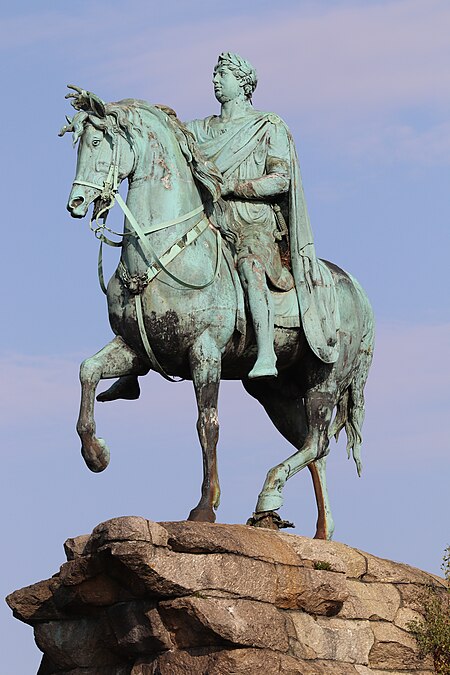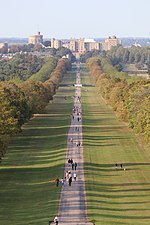The Copper Horse
1831 sculpturesBronze sculptures in the United KingdomBuildings and structures in Windsor Great ParkCultural depictions of George IIIEquestrian statues in the United Kingdom ... and 6 more
Grade I listed buildings in BerkshireGrade I listed monuments and memorialsNeoclassical sculpturesOutdoor sculptures in EnglandSculptures by Richard WestmacottUse British English from February 2023

The Copper Horse is an 1831 equestrian statue of George III. The monumental bronze statue by Richard Westmacott stands on a stone plinth at Snow Hill in Windsor Great Park in the English county of Berkshire, at the southern end of the Long Walk, a tree-lined avenue which leads in a straight line about 2.65 mi (4.26 km) from the George IV Gateway at Windsor Castle. It became a Grade I listed building in 1972.
Excerpt from the Wikipedia article The Copper Horse (License: CC BY-SA 3.0, Authors, Images).The Copper Horse
The Long Walk,
Geographical coordinates (GPS) Address External links Nearby Places Show on map
Geographical coordinates (GPS)
| Latitude | Longitude |
|---|---|
| N 51.4451 ° | E -0.6093 ° |
Address
George III (The Copper Horse Statue) (The Copper Horse)
The Long Walk
SL4 2HH , Clewer New Town
England, United Kingdom
Open on Google Maps








